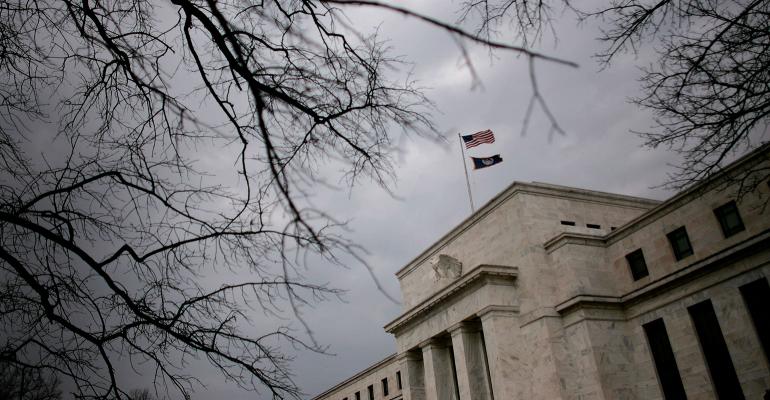(Bloomberg) -- Staving off the collapse of the financial system came with an added bonus for the Federal Reserve: A tidy profit.
The U.S. central bank accumulated roughly $8.6 billion worth of bond exchange-traded funds in 2020 as it worked to backstop markets amid a quickly descending pandemic. Now, as the Fed prepares to unwind its holdings on June 7, it’s sitting on a gain of $140 million from the price appreciation alone, according to Citigroup Inc.
After intervening in an effectively frozen corporate-debt market last year, the Fed spurred a massive rally across the credit spectrum amid a flood of inflows. Since then, high-yield bonds delivered the biggest gains for the central bank’s Secondary Market Corporate Credit Facility.
“It is worth noting that the Fed currently has a paper profit on its ETF portfolio,” Drew Pettit and Scott Chronert, analysts at Citigroup, wrote in a note Thursday. “The Fed could act more quickly in certain holdings here to lock in gains.”
The Fed’s buying was concentrated in the $40 billion iShares iBoxx $ Investment Grade Corporate Bond ETF (ticker LQD) and the $39 billion Vanguard Short-Term Corporate Bond ETF (ticker VCSH) -- in which it owns stakes worth $2.4 billion and $1.5 billion, respectively. Meantime, the central bank owns roughly $576 million in the $10.5 billion SPDR Bloomberg Barclays High Yield Bond ETF (ticker JNK).
Though the Fed didn’t begin purchasing ETFs until last May, credit markets rebounded massively from the central bank’s initial announcement in late March. LQD rallied 8% in 2020, after falling nearly 18% on a year-to-date basis before the Fed’s backstop. JNK ended 2020 about 0.6% lower, though it surged over 14% from the central bank’s announcement that it would expand its support to the high-yield market through the end of the year.
Front-runners may have done even better than the Fed itself. LQD and JNK saw a combined $12.5 billion worth of inflows in the weeks between the Fed’s announcement of the facility and the central bank’s first ETF purchases. The two funds gained 19% and 2.8%, respectively, in that span.






